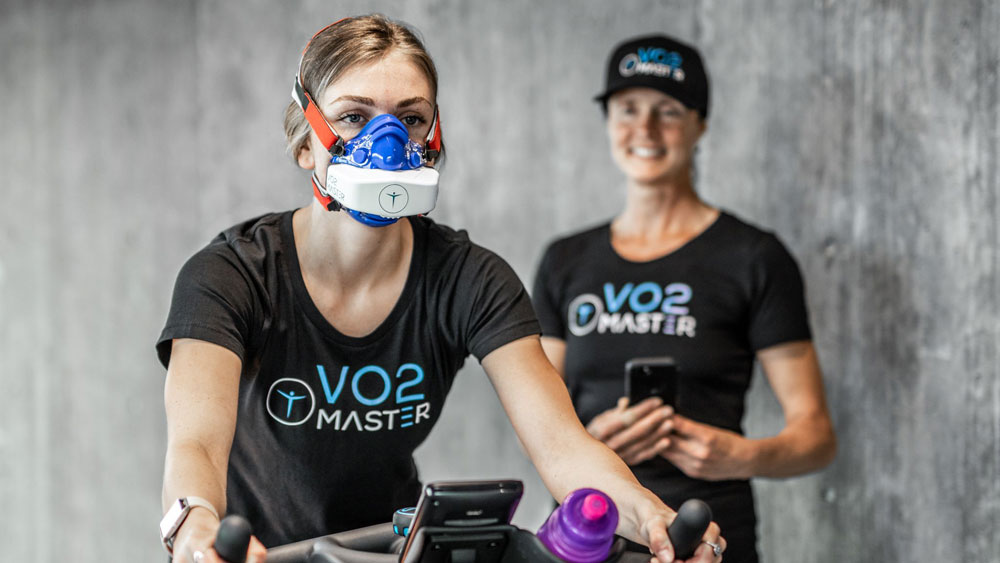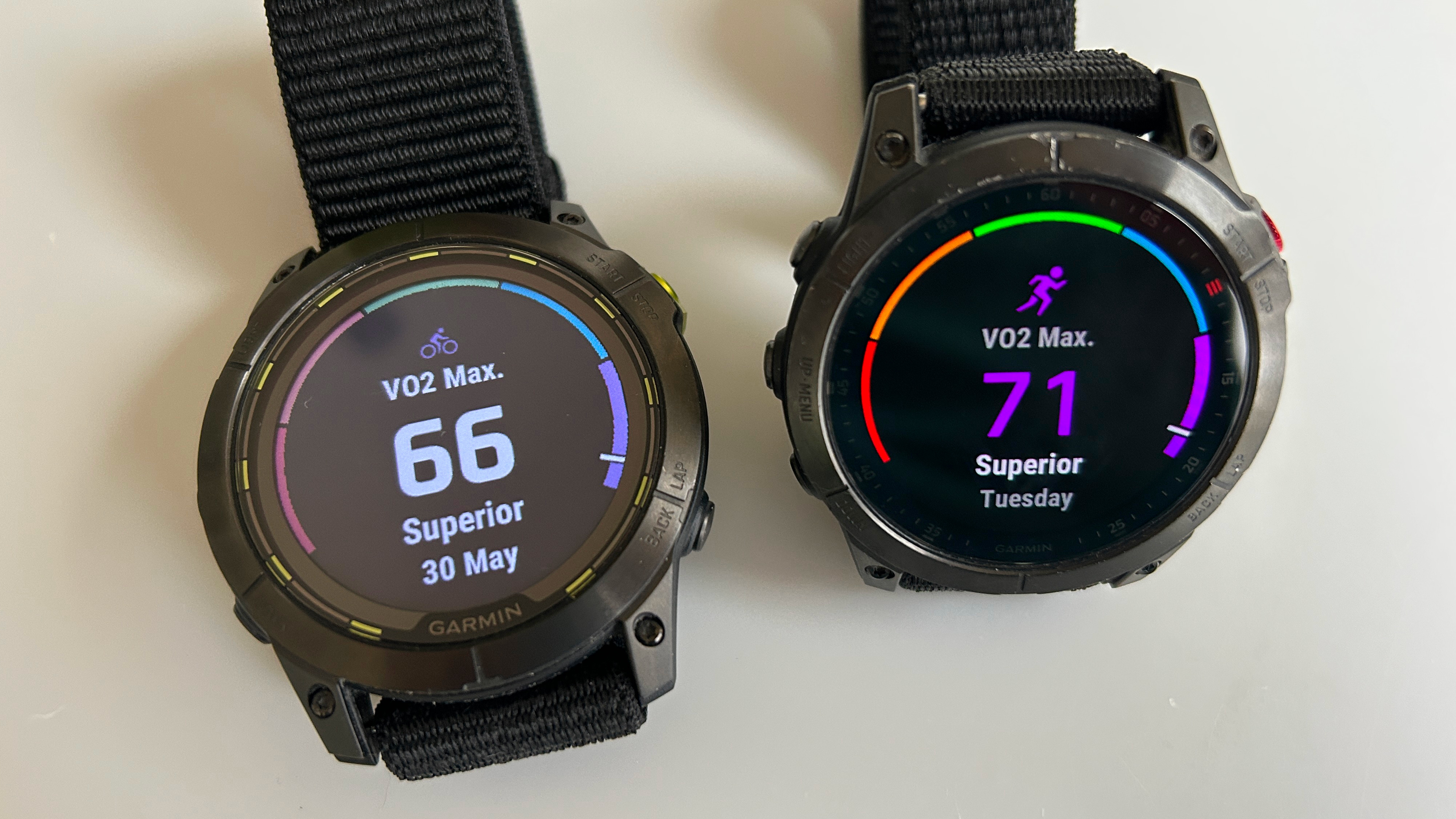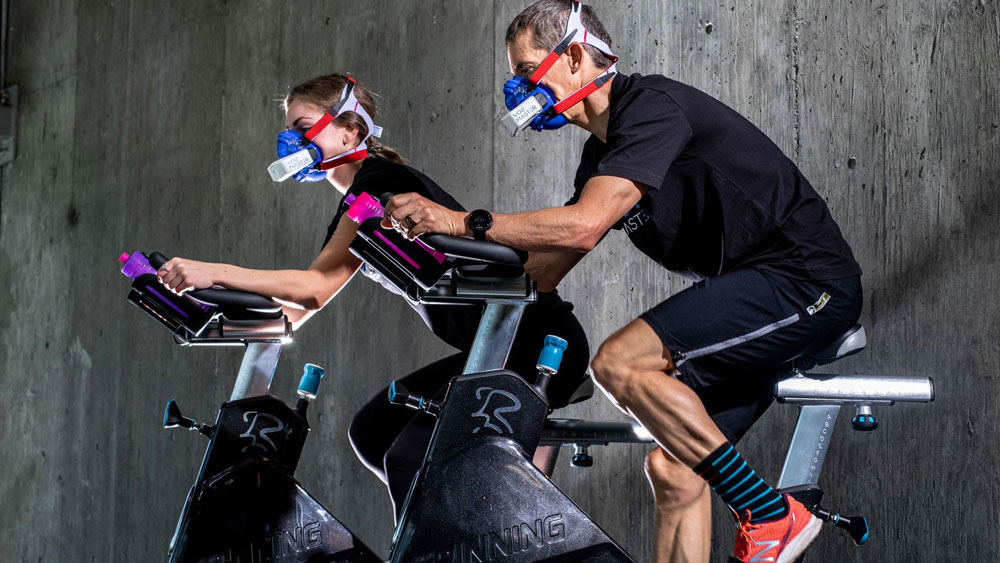What Is VO2 Max And How Do You Improve It?
Get to grips with the best measure of fitness available on consumer fitness trackers

What’s the one stat on your fitness tracker you focus on? Is it steps taken? Or calories burned? Or are you a runner who cares only about the distance covered each week? There are any number of ways to gauge your fitness using a tracker but if your device has a heart rate monitor, perhaps the very best of them is VO2 max. That’s because it’s a measurement that can tell you how fit you actually are and, by monitoring how it changes over time, you can use it to find out if you’re getting fitter.
Once, a VO2 max feature was restricted to only the best running watches, but it now pops up on most fitness trackers. However, it relies heavily on heart rate readings, so it’s worth checking that your wearable is accurate on that front if you want a result that’s anywhere close to the truth. Using a chest strap heart rate monitor can be advisable because it uses a different type of hardware which is more accurate (our guide to the best heart rate monitors explains all).
Even with the best consumer heart rate tracker in the world, the accuracy of a VO2 max measurement from a wrist device will fall short of a lab test. However, these are expensive and horribly hard, so for the average person the results will be fine as a snapshot of your fitness you can monitor over time.
For more details on what a VO2 max score means and how you can improve yours, we spoke to James Phillips, a strength and conditioning coach at Pure Sports Medicine, and Dr Garry Palmer, sports physiologist and founder of Stanley Sports, which is the UK distributor for the VO2 Master portable VO2 analyser.
What is VO2 max?
Fitness trackers will generally give your two-digit VO2 max score and an indication of whether it’s good or not compared with others in your age group, which is handy, but gives little indication of what the number actually means. Here’s the science behind the score.
“VO2 max, or maximal oxygen uptake, is the greatest amount of oxygen that can be used by the entire body,” says Phillips. “This is related primarily to the ability of the heart and lungs to transport oxygen and the ability of the body tissues to use it. VO2 max is measured in millilitres of oxygen per kilogram of mass per minute.”
Memorise that and impress everyone at your next party. Then, when they ask for a simpler explanation, say something like this.
“It is a measure of aerobic fitness related to a person’s ability to sustain long periods of moderate- to high-intensity physical activity with large muscle groups,” says Phillips.
“It is one of the most fundamental human physiology measures, with an impact on health, wellbeing and performance.”
How is VO2 max measured at an elite level?
“At elite level, VO2 max is measured in a laboratory setting through a maximal running or cycling test,” says Phillips. “It is measured directly via breathing through a mask while completing an incremental test to voluntary failure.” Essentially, strap on a mask and go hard until you drop.
Portable testers like the VO2 Master are also now available, but in either instance the equipment will be measuring the composition of the air you breathe in and out.
“The air around you is 21% oxygen,” says Palmer. “When you breathe in, the oxygen gets taken to the working muscle. The muscle extracts some but not all of the oxygen, and this oxygen is then used to help the muscle contract to push you forward. You then breathe out your waste gases.
“We’re measuring the amount of oxygen that goes in at the mouth, and then the amount of oxygen that gets breathed out, and we’re looking at the volume of that gas that you’re using. So from the 21% going in, the percentage coming out is usually somewhere between 16% and 19%.
“The critical point is the more oxygen you can use, the faster you can go and the more power you can produce.”
The measurements then have to take into account your body mass, muscle mass and lung volume, because, say, a huge rugby player will be shifting more oxygen in absolute terms than a slim long-distance runner. This is why your VO2 max is given as a figure per millilitres of oxygen per kilogram of mass per minute.

How do everyday fitness trackers estimate VO2 max?
“Everyday fitness trackers estimate VO2 max through heart rate and speed of exercise,” says Phillips.
Most of the popular consumer fitness trackers on the market use Firstbeat Technologies’ analytical algorithms to calculate VO2 max.
“The Firstbeat method for estimating VO2 max during running is through the linear relationship between VO2 and running speed, which is measured through GPS,” says Phillips.
“The oxygen cost of running increases when running speed increases. As heart rate is measured alongside running speed, Firstbeat has been able to develop an automatic VO2 max estimation method applicable for any uncontrolled workout.”
Firstbeat claims its method is 95% accurate compared with lab measurements when calculated during running, but there are potential problems with relying on a wrist-based tracker to provide GPS and heart rate measurements.
“Outside influences such as running under a bridge or the heart rate strap slipping can alter the data recorded, reducing reliability and skewing the estimation,” says Phillips (although Firstbeat says its tech identifies and removes these events from the final calculation).
If you don’t pair a chest strap with the tracker and rely on the watch to record heart rate, accuracy will probably be reduced further, because wrist devices can’t match a chest strap at monitoring heart rate.
The way to ensure a decent estimation of your VO2 max from your tracker is to use a chest strap to measure heart rate and run in an open area, but even then it will still fall short of a proper test. For example, we recently did a test using the VO2 Master and got a VO2 max of 74, while our Garmin watch measured it as 72, and our Coros watch as 69.

Which fitness trackers measure your VO2 max score?
VO2 max is available now on most fitness trackers, especially sports watches. It is now a standard feature on all of Garmin’s watches from the Forerunner 55 up, with your score plotted over time so you can see if you’re getting fitter. You can get a VO2 max score for both cycling and running so you can get a more accurate score aligned with the sport you are more experienced in.
All of Polar’s watches also provide ongoing VO2 max estimates based on the runs you track, labelled as your running index. However, this has always been very optimistic in my experience. For more accurate results you can take a cycling or running fitness test with a Polar watch to get a VO2 max score. Those are hard tests that push you to your limit, but you can also take a fitness test that just involves sitting still for five minutes to get a VO2 max estimate.
Coros and Suunto sports watches also provide VO2 max estimates based on your outdoor activities. Suunto calls it your Fitness Level and it’s based on outdoor runs and walks. Coros’s VO2 max rating is based on runs and part of the EvoLab training analysis available on all watches.
Fitbit’s fitness trackers and the Google Pixel Watch will also estimate your VO2 max, which is called your Cardio Fitness Score. If your Fitbit device doesn’t show the score itself, you can find it in the partner app. Your score will be shown as a range unless you do outdoor runs using GPS, in which case you get a more precise figure.
The Apple Watch also tracks your VO2 max, but it only measures a range of 14-65, so if your score is above or below that you won’t get an exact figure. You can see your VO2 max in the Health app, and it’s based on outdoor runs and walks.
What does an elite VO2 max test actually involve?
Usually done on a cardio machine, it’s a ramp test which means increasing the effort level in set intervals until you have to stop. This can be done via speed or incline on a treadmill.
"I would start with a good 15-minute warm-up, and then I generally start the test at eight or 10km/h,” says Palmer. “Run at that speed for one minute. And then every 30 seconds, take the speed up by 0.5km/h. Check what the max speed is on the treadmill beforehand, because some athletes will go beyond 20km/h. If you’re going to exceed that speed, then you’ll need to have a protocol that has both speed and gradient increments.”
It’s worth noting that it’s best to do a VO2 max test using the cardio machine that matches your sport because your running and cycling VO2 max will probably be different. So runners should do the test on a treadmill and cyclists on an exercise bike.
How is VO2 max a good indicator of someone’s fitness? What benefits are there to improving your VO2 max?
Basically a good VO2 max score for your age means you’re in good shape and it’s a key indicator of how you might perform in endurance events.
“It [VO2 max] has been found to correlate well with the degree of physical conditioning and is recognised as the most widely accepted measure of cardiorespiratory fitness,” says Phillips.
“As the duration of endurance events increases, so does the proportion of the total energy demand that must be met by the aerobic metabolism. The higher an individual’s VO2 max, the greater their ability to use oxygen they inhale and therefore the more energy they are able to produce.”
How do you improve your VO2 max?
If you’re a fitness beginner, improvements to your VO2 max will come relatively easily with sustained aerobic exercise like running, cycling, rowing or swimming. As you get fitter, however, you might need to start doing more intense training sessions.
“In order to improve something specifically you need to train at or around that variable – so training slightly above, below or at VO2 max pace/intensity will improve it up to a point,” says Phillips.
For example, high-intensity interval training (HIIT) where you work at close to flat-out for short periods of time will help improve your VO2 max. You can run, cycle, row or do whatever you fancy – the key is to push hard during the work intervals.
Runners working on their VO2 max can also try Fartlek workouts, which is where you change your pace throughout a run. This can be structured – like a track session where you do 400m sprints with a 400m jog to recover in between efforts – or unstructured, where you head to a local park and sprint every time you overtake, say, a dog walker. The latter can be a great way to make HIIT slightly more enjoyable because, if nothing else, every hard effort will start with seeing a dog, which is always nice.
Read More
Why The Lactate Threshold Is Important For Runners And How Can You Improve It?
How To Calculate Your Heart Rate Zones And What They Mean
What Is A Healthy Resting Heart Rate And Why Does It Matter?
Get the Coach Newsletter
Sign up for workout ideas, training advice, reviews of the latest gear and more.
Taking The VO2 Master Test At Home

I’ve always been pretty interested in the VO2 max scores provided by my running watch, but not quite interested enough to fork out for a full test in a lab. However, there is now another option in the shape of the VO2 Master portable VO2 analyser.
It uses a mask that doesn’t need to be rigged up to a cart in a lab, so you can do tests anywhere. The UK distributor is Stanley Sports, which sent the kit to me to try a home test on a treadmill.
Each VO2 Master is calibrated individually and tested extensively, but you will sacrifice some accuracy to gain the convenience and relatively low cost.
“Some of the gold-standard metabolic carts that cost £60,000 to £100,000 are going to knock the accuracy of this out of the water,” says Palmer, “but you can’t take a metabolic cart with a great big PC on a trolley system and run alongside the road with an athlete, or take it mountain biking.”
There are several steps to setting up the mask to do the test properly, but there are instructions in the case and a partner app that will help you set up the protocol for your test and then guide you through it while showing the live readings from the mask. It makes the procedure fairly foolproof, in that at least this fool was able to complete it successfully without external help.
The test itself is actually not quite as brutal as I feared. While you do push to the max, there’s only a brief spell of truly horrible effort, since you’re increasing the difficulty every minute and starting at a fairly easy level, and you’ll probably only get through around 10 minutes before having to stop.
Once you finish the test you get your VO2 max, plus max heart rate and training zones you can use to help guide your efforts in different kinds of sessions, which can help you do your workouts at the correct intensity.
The basic data is undoubtedly useful, but the test can reveal a whole lot more if you then get an expert to walk you through the stats and discuss your training.
“This is something that coaches or exercise physiologists can use to provide a lot more data about the athlete,” says Palmer. “It can help you train more effectively, so you’re less likely to get injured or ill, or even just fatigued. Or, actually, you might find you can step your training levels up.”
The VO2 Master costs £4,980, which is a relative snip for this kind of equipment but still obviously a lot of money, so I’d expect it would be something that coaches and sport scientists acquire to use with their clients. At the moment there is no easy way to find someone who uses the VO2 Master with their clients beyond Googling or asking your current coach or PT.
Elites and the very keenest of amateurs might consider it a worthy investment for the quality of the data you get from ongoing tests, which can be done at a sub-maximal level, along with periodic ramp tests.
For more information on the VO2 Master visit vo2master.co.uk

Nick Harris-Fry is a journalist who has been covering health and fitness since 2015. Nick is an avid runner, covering 70-110km a week, which gives him ample opportunity to test a wide range of running shoes and running gear. He is also the chief tester for fitness trackers and running watches, treadmills and exercise bikes, and workout headphones.









